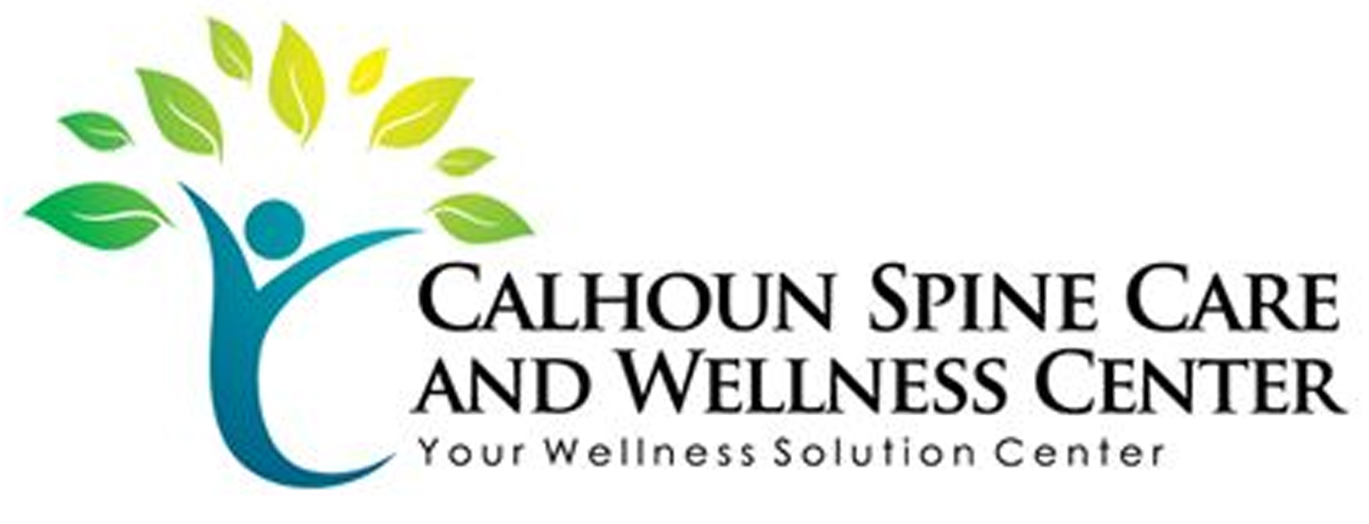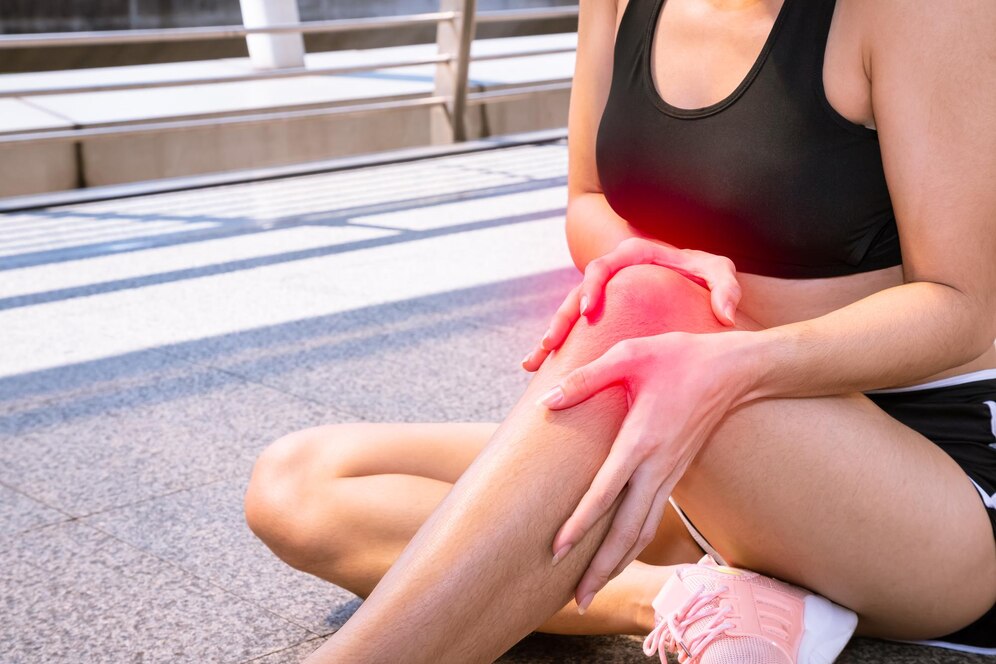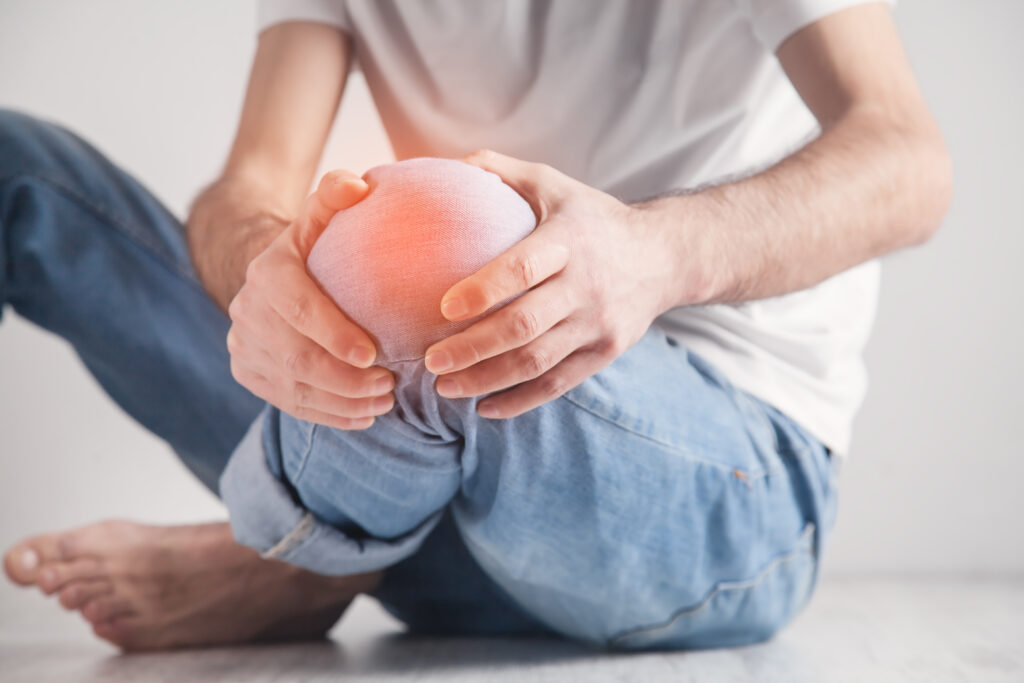If you're dealing with persistent headaches in Calhoun, you're not alone, and there are effective strategies you can implement. From staying hydrated to identifying your specific triggers, these tips can make a significant difference in how you manage discomfort. You might find that simple adjustments to your routine could lead to lasting relief. But what if there's more to it than just the obvious solutions? Let's explore some nuanced approaches that could transform your headache experience.
Stay Hydrated Throughout the Day
When you don't drink enough water, you mightn't only feel fatigued but also invite headaches into your day. Staying hydrated is essential for maintaining your overall health, and it plays a significant role in headache prevention. When your body lacks fluids, it can lead to dehydration, which is a common trigger for headaches.
So, how can you make sure you're drinking enough throughout the day? Start by carrying a water bottle with you wherever you go. This simple action serves as a constant reminder to sip water regularly.
Aim to drink water at regular intervals, rather than waiting until you feel thirsty. Thirst is actually a sign that your body is already dehydrated, so it's better to stay ahead of the game.
You can also incorporate water-rich foods into your diet. Fruits and vegetables like cucumbers, watermelon, and oranges not only hydrate you but also provide essential nutrients. If you find plain water boring, try infusing it with fruits or herbs for added flavor.
Setting small daily goals can make a big difference. For instance, aim to drink a glass of water with each meal and snack. This can help you reach your hydration goals without even thinking about it.
Lastly, pay attention to your body's signals. If you notice dry skin, fatigue, or headaches, it might be time to increase your water intake.
Identify Your Triggers
Identifying your headache triggers is essential for effective management and prevention. By pinpointing what sets off your headaches, you can take steps to avoid these triggers and reduce the frequency and intensity of your pain.
Start by keeping a headache diary. Track when your headaches occur, how long they last, their severity, and any accompanying symptoms. Note what you were doing before the headache started, your eating habits, stress levels, and even your sleep patterns. This detailed log will help you spot patterns over time.
Common triggers include certain foods like aged cheese, chocolate, or processed meats. Caffeine can also be a double-edged sword; while it may relieve some headaches, it can lead to withdrawal headaches if you consume it in excess. Environmental factors, such as strong odors, bright lights, or loud noises, can also contribute to your discomfort.
Don't overlook emotional triggers, like stress or anxiety. These can greatly impact your tension levels and lead to headaches. Additionally, hormonal changes, particularly in women, can trigger migraines around menstrual cycles.
Once you've identified your triggers, make adjustments to your lifestyle. If stress is a major factor, consider incorporating stress-reduction techniques, adjusting your diet, or even consulting with a healthcare professional.
Practice Relaxation Techniques
When headaches strike, practicing relaxation techniques can be a game changer.
You can use deep breathing exercises, progressive muscle relaxation, and mindfulness meditation to help ease tension and reduce pain.
Let's explore how these simple methods can make a real difference in your comfort.
Deep Breathing Exercises
Deep breathing exercises can be a powerful way to relieve headaches and promote relaxation. When you focus on your breath, it helps calm your mind and eases tension in your body.
Start by finding a comfortable position, whether you're sitting or lying down. Close your eyes and take a deep breath in through your nose, filling your lungs completely. Hold that breath for a moment, then slowly exhale through your mouth.
Repeat this process, aiming for a steady rhythm. As you breathe in, visualize fresh air energizing your body, and as you breathe out, imagine releasing the tension and stress that contribute to your headache.
You might find it helpful to count your breaths, inhaling for a count of four, holding for four, and exhaling for six. This technique not only helps ground you but also shifts your focus away from the pain.
Practice this for five to ten minutes, and you'll likely notice a difference in how you feel. Incorporating deep breathing into your daily routine can help prevent headaches by keeping stress levels in check, so make it a habit whenever you sense tension building.
Progressive Muscle Relaxation
Progressive Muscle Relaxation (PMR) is an effective technique for relieving headaches and reducing overall tension in your body. By systematically tensing and then relaxing each muscle group, you can release built-up stress and promote a sense of calm.
To practice PMR, find a comfortable, quiet space where you won't be disturbed. Start by sitting or lying down. Close your eyes and take a few deep breaths to center yourself.
Begin with your toes; tense the muscles for about five seconds, then relax them completely. Notice the difference between tension and relaxation. Move up to your calves, thighs, and so forth, working through each major muscle group—your abdomen, arms, shoulders, neck, and face.
As you progress, focus on the sensations in your body. If you notice any areas still holding tension, spend a little extra time on them. After you finish, take a moment to appreciate the relaxation you've achieved.
Regularly practicing PMR can help lower your stress levels, making you less susceptible to headaches in the future. Incorporating this technique into your daily routine can be a simple yet powerful way to enhance your overall well-being.
Mindfulness Meditation Techniques
Mindfulness meditation techniques can considerably enhance your ability to manage headaches and reduce stress. By focusing on the present moment, you can train your mind to let go of tension and anxiety that might contribute to your headaches.
Start by finding a quiet space where you won't be disturbed. Sit comfortably and close your eyes.
Begin with a few deep breaths, inhaling through your nose and exhaling through your mouth. Focus on the sensation of your breath—notice how your chest rises and falls. If your mind wanders, gently bring your attention back to your breath. You might also visualize a peaceful scene, like a tranquil lake or a lush forest, to further calm your mind.
Try practicing mindfulness for just five to ten minutes each day. As you get more comfortable, you can extend this time.
Over time, you'll likely find that this practice helps you respond to headaches with more resilience. Remember, consistency is key. Incorporating these mindfulness techniques into your routine can empower you to manage headaches more effectively, reducing their frequency and intensity.
Maintain a Consistent Sleep Schedule
Maintaining a consistent sleep schedule is essential for preventing headaches.
By setting regular sleep hours and limiting screen time before bed, you help your body establish a healthy rhythm.
This simple adjustment can make a significant difference in how you feel each day.
Set Regular Sleep Hours
Establishing a consistent sleep schedule can greatly reduce the frequency and intensity of headaches. When you set regular sleep hours, your body learns to anticipate rest, making it easier to fall asleep and wake up refreshed.
Here are some tips to help you establish and maintain that schedule:
- Choose a Wake-Up Time: Pick a time to wake up every day, even on weekends. This consistency reinforces your body's internal clock.
- Set a Bedtime: Determine a bedtime that allows for 7-9 hours of sleep. Stick to this time to help your body adjust.
- Create a Pre-Sleep Routine: Engage in relaxing activities before bed, like reading or gentle stretching. This signals your body that it's time to wind down.
- Limit Naps: If you need to nap, keep it short, around 20-30 minutes, and avoid napping too late in the day. Long or late naps can disrupt your nighttime sleep.
Limit Screen Time Before Bed
Limiting screen time before bed is another key aspect of promoting a consistent sleep schedule. When you cut back on screens in the evening, you give your mind a chance to unwind. The blue light emitted by phones, tablets, and TVs can interfere with your body's production of melatonin, the hormone responsible for regulating sleep.
To help alleviate headaches and improve your sleep quality, try to set a specific time to put away your devices. Instead of scrolling through social media or binge-watching your favorite shows, consider engaging in calming activities like reading a book or practicing relaxation exercises. This not only prepares your mind for sleep but also reduces eye strain, which can contribute to headache discomfort.
Aim to turn off screens at least an hour before bed to reap the most benefits. Also, create a bedtime routine that signals your body it's time to wind down. Consistency is essential, so try to follow the same routine each night.
Use Essential Oils
Essential oils can be a powerful ally in your quest to relieve headaches. These concentrated plant extracts offer natural remedies that can help soothe your pain and promote relaxation. Here are some essential oils you can try:
- Peppermint Oil: This oil has a cooling effect that can help relieve tension headaches. Applying diluted peppermint oil to your temples and massaging it in can enhance blood flow and alleviate pain.
- Lavender Oil: Known for its calming properties, lavender oil can reduce stress and promote relaxation. You can inhale its scent directly or use it in a diffuser to create a soothing atmosphere that might help ease your headache.
- Eucalyptus Oil: If your headache is accompanied by sinus pressure, eucalyptus oil can be beneficial. It's known for its anti-inflammatory properties, and inhaling its aroma can help clear your sinuses and reduce headache intensity.
- Rosemary Oil: This oil can improve circulation and relieve tension. Apply diluted rosemary oil to your neck and shoulders for a soothing massage that may help ease headache pain.
When using essential oils, always dilute them with a carrier oil to prevent skin irritation.
You can also consider using an oil diffuser, inhaling directly from the bottle, or adding a few drops to a warm bath.
With the right essential oils, you can find natural relief and ease your headache symptoms effectively.
Apply Cold or Warm Compresses
Using cold or warm compresses can provide quick relief from headaches.
A cold compress can numb pain and reduce inflammation, while a warm compress helps relax tense muscles.
Timing is key, so knowing when to apply each type makes a difference in your comfort.
Benefits of Cold Compress
Have you ever wondered how a simple cold compress can ease your headache? This straightforward method can deliver quick relief and help you feel better in no time.
Cold therapy works by constricting blood vessels and numbing the area, reducing inflammation and dulling pain. Here are four key benefits of using a cold compress:
- Reduces Inflammation: Cold temperatures can help minimize swelling and inflammation, making it effective for headaches caused by tension or sinus issues.
- Numbs Pain: The cold sensation can temporarily numb the pain receptors in your head, offering immediate relief from discomfort.
- Improves Blood Flow: After removing the compress, blood vessels dilate, which can promote better circulation and help alleviate headache symptoms.
- Calms Nerves: A cold compress can provide a soothing effect, helping to relax your body and mind, which may greatly reduce headache severity.
To use a cold compress, simply wrap ice packs or a bag of frozen vegetables in a towel and apply it to your forehead or temples for about 15-20 minutes.
Enjoy the relief as you let the cold work its magic!
Warm Compress Techniques
Applying a warm compress can be just as effective as a cold one for relieving headaches. Warmth helps relax tense muscles and increases blood flow, which can ease pain, especially if your headache is tension-related.
To use a warm compress, try a couple of methods. You can heat a damp washcloth in the microwave for about 20 seconds, ensuring it's warm but not too hot to touch. Alternatively, you can fill a hot water bottle or a heating pad with warm water and place it on your forehead or the back of your neck.
Make sure to keep the compress in place for about 15 to 20 minutes. If you find the heat dissipating quickly, consider reapplying or enhancing it with a fresh warm cloth.
You might also try resting in a quiet, dark room while using the compress, as this can further enhance relaxation and pain relief. Remember to listen to your body; if the warmth feels uncomfortable, remove it immediately.
Experiment with different temperatures and methods to find what works best for you. This simple technique can be an effective part of your headache-relief toolkit.
Timing for Application
Knowing when to apply a cold or warm compress can considerably enhance your headache relief strategy. The timing of these applications can make a significant difference in how quickly you find relief.
Here's a quick guide to help you decide:
- Cold Compress: Use this for tension headaches or migraines. Apply it as soon as you feel the pain starting. The cold helps numb the area and reduce inflammation.
- Warm Compress: Ideal for tension headaches, especially when caused by muscle tightness. Apply it to your neck or shoulders for 15-20 minutes to relax the muscles and improve blood flow.
- Duration: Keep the compress on for about 15-20 minutes, then take a break. You can repeat this process several times, depending on your comfort level.
- Personal Preference: Everyone's different; some find relief with cold while others prefer warmth. Try both methods to see which one works best for you.
Explore Herbal Remedies
While many people reach for over-the-counter medications to relieve headaches, exploring herbal remedies can offer a natural alternative worth considering. Herbal options have been used for centuries and may provide effective relief without the side effects often associated with conventional drugs.
Start with peppermint oil. Rubbing a few drops on your temples can help relax tense muscles and improve circulation, potentially easing headache pain.
Another popular choice is ginger. You can brew ginger tea or chew on fresh ginger to combat inflammation and nausea that sometimes accompany headaches.
Feverfew is another herb that has shown promise. Some studies suggest that regular consumption may reduce the frequency of migraines. You can find it in capsule form or as dried leaves for making tea.
Similarly, butterbur has been researched for its potential to prevent migraines, but make sure to choose a PA-free version, as some extracts can cause liver issues.
Chamomile tea is a soothing option that not only helps with relaxation but may also reduce headache severity. Its calming effects can be especially beneficial if your headaches stem from stress.
Finally, consider using lavender essential oil. Inhaling its scent or applying it topically may help decrease headache intensity and improve your mood.
Before trying any herbal remedy, it's smart to check with a healthcare professional, especially if you're taking other medications.
Try Acupressure Methods
If herbal remedies aren't quite your thing, you might want to explore acupressure methods as a way to alleviate headache pain.
Acupressure involves applying pressure to specific points on your body, which can help release tension and promote relaxation. It's an easy technique you can do anywhere, and all you need is your hands.
Here are four acupressure points you can try for headache relief:
- Yintang: Located between your eyebrows, this point is often called the "third eye." Gently press and hold for a few minutes to help ease tension headaches.
- LI4 (Hegu): Found on the back of your hand, in the webbing between your thumb and index finger. Apply pressure here to relieve pain in your head and face.
- GV20 (Baihui): This point is at the top of your head, in line with your ears. Pressing here can help uplift your mood and reduce headache pain.
- PC6 (Neiguan): Located on your inner forearm, about two finger widths from your wrist crease. This point can help alleviate nausea and tension headaches.
To practice acupressure, simply use your fingers to apply firm, steady pressure to these points.
Breathe deeply and relax as you hold the pressure for 30 seconds to a minute. You'll likely find that acupressure can be a simple yet effective way to manage your headache pain.
Schedule Regular Exercise
Incorporating regular exercise into your routine can greatly reduce the frequency and intensity of headaches. When you engage in physical activity, your body releases endorphins, which are natural pain relievers. These endorphins help improve your mood and provide a sense of well-being, making it less likely for stress to trigger a headache.
Aim for at least 30 minutes of moderate exercise most days of the week. Activities like walking, jogging, swimming, or cycling can be beneficial. You don't need to hit the gym every day; even simple activities like gardening or playing with your kids can count. The key is to find something you enjoy, so you'll stick with it.
Don't forget to incorporate stretching and flexibility exercises. Yoga and Pilates can help alleviate muscle tension and promote relaxation, both of which are vital for headache relief. Plus, these practices can help improve your posture, reducing the likelihood of tension headaches caused by neck and shoulder strain.
It's also important to listen to your body. If you notice that certain activities trigger headaches, modify or avoid them. Staying hydrated during your workouts is essential, as dehydration can also lead to headaches.
Make exercise a part of your daily routine. Schedule it into your day just like any other appointment to guarantee you prioritize it.
With consistency, you'll likely notice a significant improvement in your overall well-being, including a reduction in headache occurrences.
Consult a Local Specialist
Regular exercise can greatly improve your overall health, but sometimes headaches persist despite your best efforts. If you're struggling with frequent or severe headaches, it might be time to consult a local specialist. A healthcare professional can help pinpoint the underlying causes and provide tailored treatment options to relieve your discomfort.
Here are a few reasons why consulting a specialist is a beneficial step:
- Accurate Diagnosis: Specialists can conduct thorough evaluations to determine whether your headaches are tension-related, migraines, or caused by other medical issues.
- Personalized Treatment Plans: Once they diagnose your condition, they can create a customized treatment plan that may include medication, lifestyle changes, or alternative therapies.
- Expert Guidance: Specialists stay updated on the latest research and techniques in headache management, ensuring you receive the best possible care.
- Follow-Up Support: Ongoing consultations can help monitor your progress and make necessary adjustments to your treatment plan, leading to better long-term outcomes.
Don't hesitate to seek help. Local specialists in Calhoun can offer valuable insights and support that you mightn't achieve on your own.
Conclusion
By following these tips, you can take control of your headaches and improve your overall well-being. Staying hydrated, identifying triggers, and practicing relaxation techniques can make a big difference. Don't forget to maintain a consistent sleep schedule and incorporate essential oils and exercise into your routine. If headaches persist, consulting a local specialist can provide personalized strategies. Remember, you're not alone in this, and with the right approach, you can find relief.



